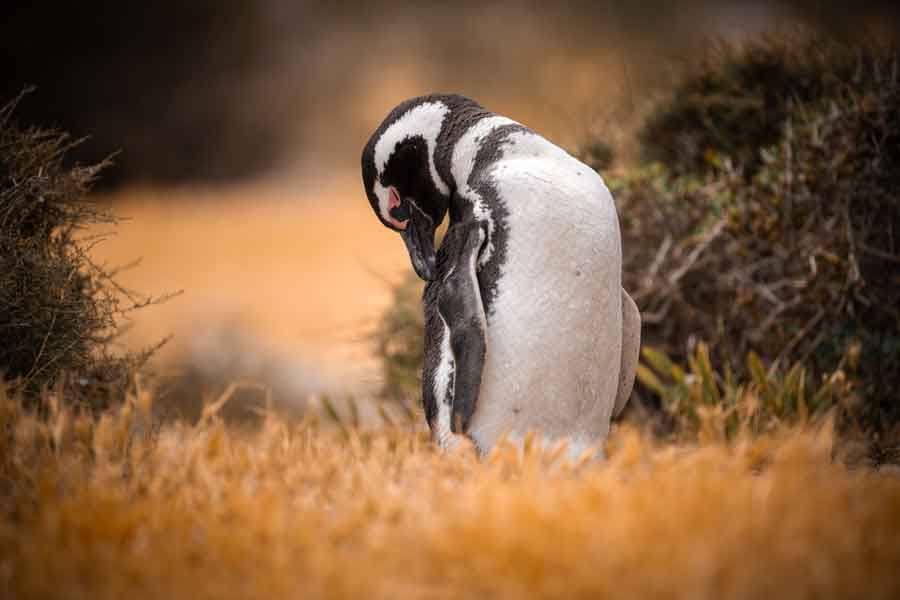Today, on November 16, 2023, I am in Argentina for the first time. I am currently working as a photographer for Hapag-Lloyd Cruises, and if you don’t know me yet, you can find out more about me here!
After setting foot in South America for the first time a week ago, today I saw penguins in the wild for the first time. Magellanic penguins, to be exact!


I am visiting the Estancia San Lorenzo on the Valdés Peninsula, about 200 kilometers from the city of Puerto Madryn. Located on the beach, it’s a protected penguin reserve with a population of about 600.000 penguins, including 200.000 juveniles.




Experiencing penguins up close is a daily occurrence here. The animals are very curious and approach us on their own.


At the current time, in November and December, the penguins are breeding their chicks in small earth burrows, often hidden in the bushes. They lay and warm the eggs underneath them. The breeding period typically lasts 40-42 days.


During the breeding season, the parents of the chicks take turns incubating the eggs, allowing the other to go foraging in the sea. The self-made burrows offer not only protection from wind and weather but also from predators, such as skuas or gulls, which constantly circle over the nests trying to steal unguarded eggs.



Here, I was able to catch a brief glimpse of one of the eggs.

We are in luck: The first chicks hatched a few days ago and are being closely guarded by their mother. Here are the various stages of the chicks, as described to us by our guide:
- Hatching to First Feathers: The chicks hatch after a breeding period of about 40 to 42 days. In the first weeks after hatching, they are completely dependent on their parents, who feed them with pre-digested fish. During this time, the chicks have a fluffy, brown downy coat.
- Beginning of Independence: After about a month, the chicks start taking their first steps towards independence. They leave the nest and gather in groups known as “creches” while their parents go foraging.
- Transition to Juvenile Plumage: At about two to three months old, the chicks begin to shed their fluffy down and develop a waterproof juvenile plumage. This process is known as “molting.” Once they have their waterproof feathers, they start practicing swimming and diving, which is essential for their independence.
- Full Independence: Magellanic penguin chicks typically become independent from their parents at about three months old. At this point, they are capable of swimming, diving, and hunting on their own.
- Reaching Maturity: However, the chicks are not immediately fully grown. They reach their full size and sexual maturity at about 4 to 5 years old. By then, they have undergone several molts and acquired their adult plumage.





I hope you enjoyed my photos and this brief article! I am now looking forward to another day at sea before we arrive in Puerto Deseado. See you soon!
